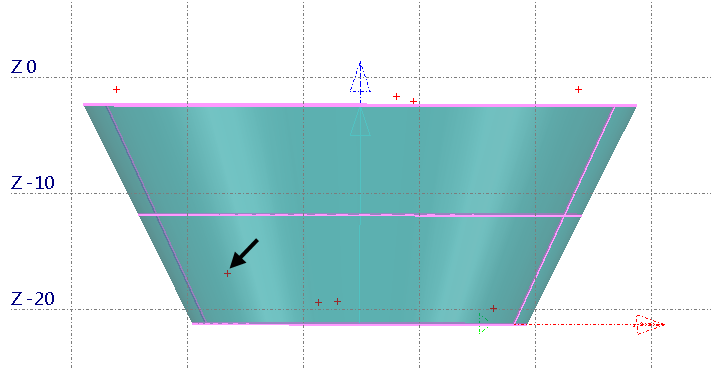The distribution of points is important for GD&T Circular Runout. If there are cross-sections in the feature with just one measured point, the result gives the error There are not enough points. There must be at least two points in each cross-section. These points must deviate less than 1 mm from each other along the surface of the feature.
- For cylinders, this distance is measured along the feature axis, so distances parallel to the datum axis are compared.
- For cones, this distance is measured at the angle of the conical surface (less than 1 mm as seen along the feature axis), so distances at the cone half-angle away from the datum axis are compared.
- For planes, this distance is used when comparing the distance of each plane point away from the primary datum axis, so distances perpendicular to the datum axis are compared.
For example, in this Cone feature, one of the points (marked with an arrow here) is considered a single point because it is too far from the other points:

There are two solutions:
- Include more points in the feature so that there are at least two for each cross-section. This solution gives more accurate results.
- Exclude single points from the fitting.
Alternatively, consider using Total Runout.